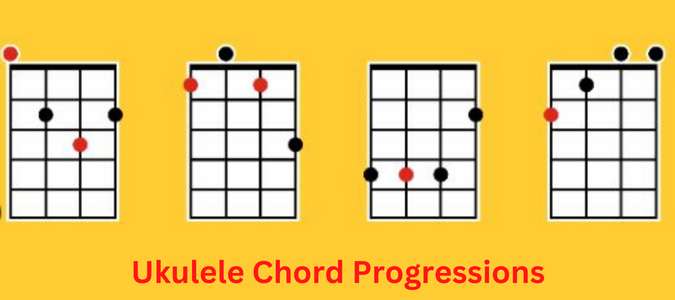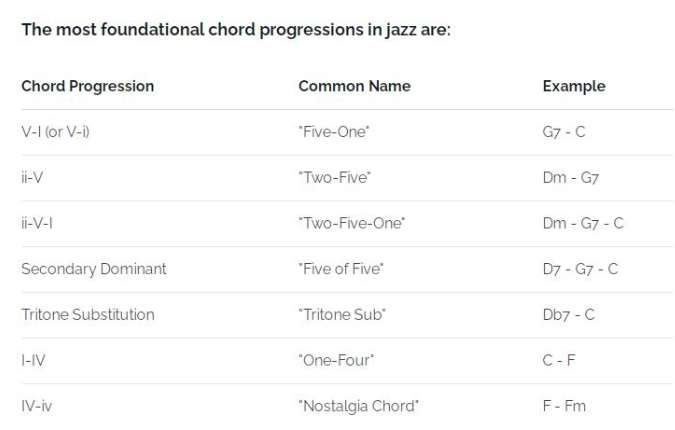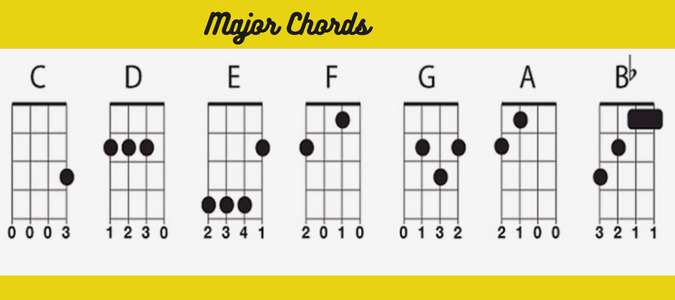
Making your skills as a player relies heavily on learning the perfect ukulele chord progressions. Whether strumming ukulele classics or composing your songs, knowing chord progressions in common keys will be helpful for you.
What are chord progressions?
Chord progressions mean the order of the chords, working as the basis of a song. They remain concerning the root of the song within a piece of music that supports harmony, melody, and rhythm.
Importance of learning chord progressions
Mastering chord progressions becomes significant as it lets you play and compose music better. If you learn fundamental progressions, you can apply your knowledge to detect popular song chords so you can strum them yourself.
Also, when you compose your personal, knowing progressions becomes essential. Begin with straightforward, fundamental progressions and work your way up to more generative combinations with your new learning chords.
Ways to indicate chords with Roman numerals
Songs in a Major key are built depending on the Major scale, with triads (3-note chords with a root, a 3rd, and a 4th) formed on all the notes within the scale. We can indicate each trio on the Major scale through Roman Numerals in the following ways:
- I — a Major triad that commences on the 1st scale degree.
- II – a minor trio that commences on the 2nd scale degree.
- III – a Minor trio that starts on the 3rd scale degree.
- iV – a Major triad beginning on the 4th scale degree.
- v – a Major trio that commences on the 5th scale degree.
- Vi — a minor trio commencing on the 6th scale degree.
- viiº – a diminished trio that begins on the 7th scale degree.
For instance, below are the trios for the F major scale:
- I — F major
- ii — G minor
- iii — A minor
- IV — Bb major
- V —C major
- vi — D minor
- viiº — E diminished
Here are the trios for the natural minor scale in the following:
- i—a Minor trio commencing on the 1st scale degree.
- iiº—a diminished trio that begins on the 2nd scale degree.
- ♭III—a Major trio that starts on the 3rd scale degree (also familiar, in this case, as the flat 3rd degree).
- IV—a Major trio that commences on the 4th scale degree.
- v—a Major trio that begins on the 5th scale degree.
- ♭Vi—a Major key that starts on the 6th scale degree (also named the flat 6th degree).
- ♭VII—a Major triad beginning on the 7th scale degree (sometimes called the Flat 7th degree).
4 Basic Ukulele Chord Progressions
Four fundamental progressions become suitable for newbie ukulele players.
1. I-IV-I-V: This progression functions well for simple songs, folk music, and simple pop. If you use it on the G Major key, you will be capable of playing a G chord, a C chord, a G chord, and a D chord, all of which are straightforward chords with relatively easy fingering. Also, in the F Major key, you can strum an F chord, a B-flat chord, an F chord, and a C chord.
2. I-V-vi-IV: This progression remains general in uke songs and produces an excellent sound on a uke. In the G Major key, it’ll be a G chord, a D chord, an E minor chord, and a C chord.
3. I-V-II-VI-III: This progression utilizes the 5th circle. Each is spaced from its bottom by a 5th interval. The C major, G major, D major, A major, and E major are instances of a circle of the 5th progression.
4. iii7-vi7-ii7-V7: This last progression includes the 7th and sounds a jazzier. Besides, it acts well in traditional Hawaiian strumming patterns.
These progressions function not only for the ukulele but also serve as piano chords, guitar chords, and the roots of a bass line. While playing the uke in a group, you mix in with other instrumentalists, with all players following the same chord progression.
Different chord progressions
It doesn’t matter if you’re too young or old to try the ukulele. You will be wondering how simple it is to master a ukulele when picking it up for the 1st time. Using several simple chords, you can play plenty of tunes that sound fantastic and are enjoyable to sing.
You’ll observe that each song is formed around them when you begin to learn about progressions. That’s why mastering them can aid you in understanding music better and learning faster.
Popular ukulele chord progressions
Being capable of composing your music is one of the most enjoyable aspects of learning to play the ukulele. Sure, we all commence by practicing a few of the more well-known ukulele tunes, but most musicians wish to produce their original compositions over time. For this, we need to focus on the progression of knowledge.
The songwriting isn’t as complex as you think. There are a lot of patterns and progressions that nearly any lyricist abides by, and they stand the test. Sure, a talented lyricist understands when to shatter the rules, but the basics are almost always maintained.
At the last of this article, you will find how many songs contain the same chord progressions. A few popular ones are Axis of Awesome, La Folia, The Blues, Doo Wop Progression, Sensitive Progression, Classic Rock Progression, and Flamenco Progression.
Jazz ukulele chord progressions
The easy order of standard jazz shapes creates a simple sound on the ukulele compared to some other chords. Indeed, the melodies and sounds they produce give them an overwhelmingly euphoric feel.
Let’s walk through the basics of playing jazzy chords on your instrument. There is something for everyone, from the jazz chord formations to straightforward progressions to songs to teach yourself about form.
If you play using standard chord forms, the following jazz chord progressions will create an incredibly fundamental sound. Fancy voicing that mentions the more attractive decorative notes in chords delivers much of the ukulele jazz appeal.
A substitution chord refers to the shape played in place of a less attractive chord. Besides, they provide fundamental consistency while permitting you to stretch on it for a more varied tone.
Hawaiian ukulele chord progressions
The Hawaiian vamp is usually made of three chords and utilized as a counterpoint at a verse or chorus end, which is one of the most recognizable Hawaiian-sounding chord progressions. You’ll see below how to discover the three chords in a Hawaiian vamp:
- Jot down the major scale in the key you are playing.
- The 1st chord will be the 2nd note of the scale as the seventh chord.
- The 2nd chord will be the 5th note of the scale as the 7th chord.
- Similar to a major chord, the 3rd chord will be the 1st note of the scale.
If you study the key of C, for example, below is the C measure:
These are the C, D, E, F, G, A, B, and C.
- Make a seventh chord from the 2nd note: D7
- Make a seventh chord within the 5th note: G7
- And make a major chord from the 1st note: C
The D7, G7, and C are the chords for a Hawaiian song in the key of C.
Easy ukulele chord progressions
Some simple and popular ukulele songs for starting are super hits, such as “22” by Taylor Swift, “Blowin’ in the Wind” by Bob Dylan, and “Someone Like You” by Adele. These easy songs feature in 4/4 time signature, which means every measure contains 4 beats, each a quarter note. If you want to prepare for learning these songs, play every chord 4 times.
On the G chord, start by playing a few measures of four successive down strums at a stable speed. After that, press the C chord, afterward, the G chord, and lastly, the D chord. Tap your feet as you perform the chords, strumming each for the four counts.
Happy chord progressions
While tuning your ukulele, you are aware that the G-C-E-A is the standard tuning for it. In truth, a beautiful G key comes from this standard tuning.
Once you are accustomed to jumping from chord to chord, you’ll become excited to attempt playing one of the ukulele songs from the list below. Remember that commence slowly and gradually increase the tempo because you’ll become more relaxed.
It’ll be best for you to start with a song that is already familiar to you at the beginning. Honestly, it’ll aid you in changing the chords correctly, as well as let you sing or count the tone when you play. Next, you’d advance to more unusual and difficult music!
A few happy songs that mimic this tune are “Blowin’ In The Wind” by Bob Dylan and “22” by Taylor Swift. If you at least hear at the beginning of these songs, you will listen to consistent strumming patterns.
Sad chord progressions
Disappointing chords let you express profound emotional ideas, explanations, and states in the music. This continuation is what makes songs known for their emotional power so unforgettable.
Some such popular sad songs are “Tears in Heaven” by Eric Clapton, “Rolling in the Deep” by Adele, and the Johnny Cash cover of the song “Hurt.”
Conclusion
We’ve covered this article about uke chord progressions. Hopefully, it’ll assist you in mastering chord progressions on the ukulele.
Read also:

